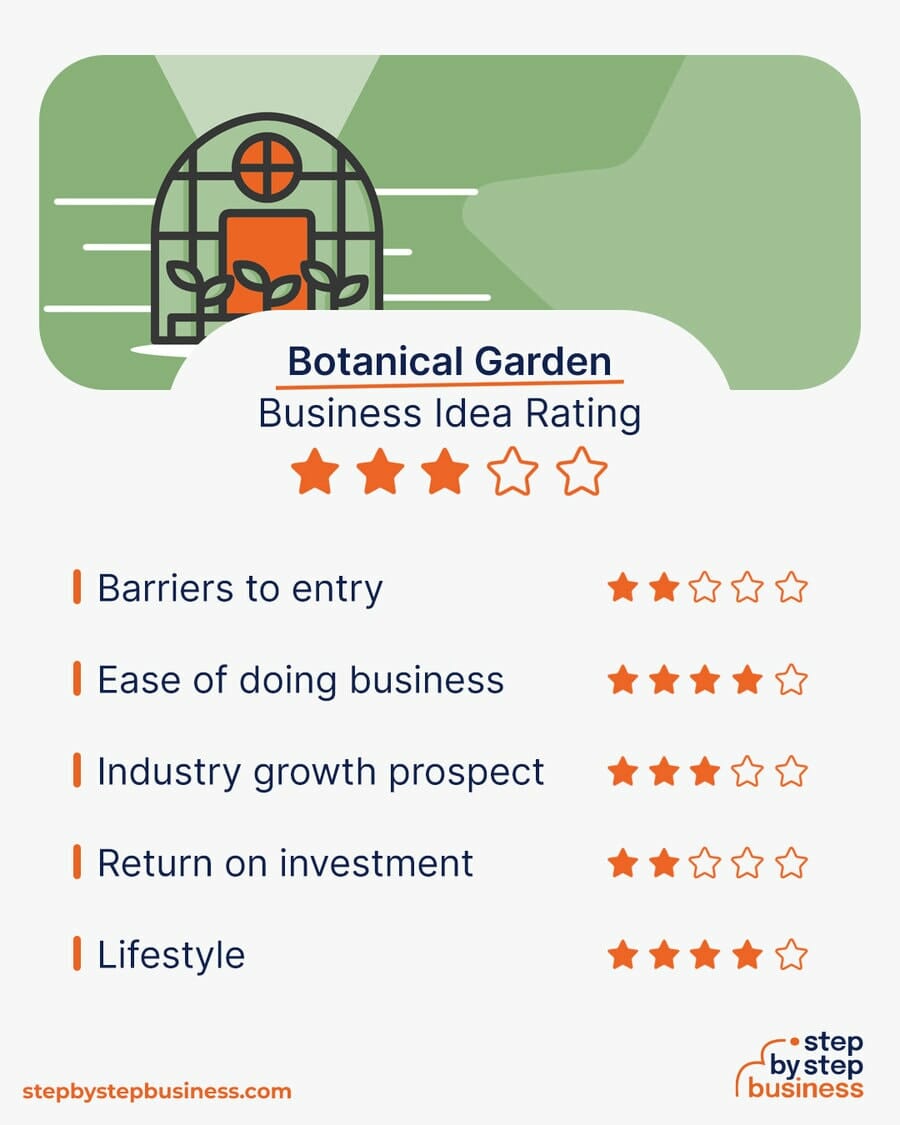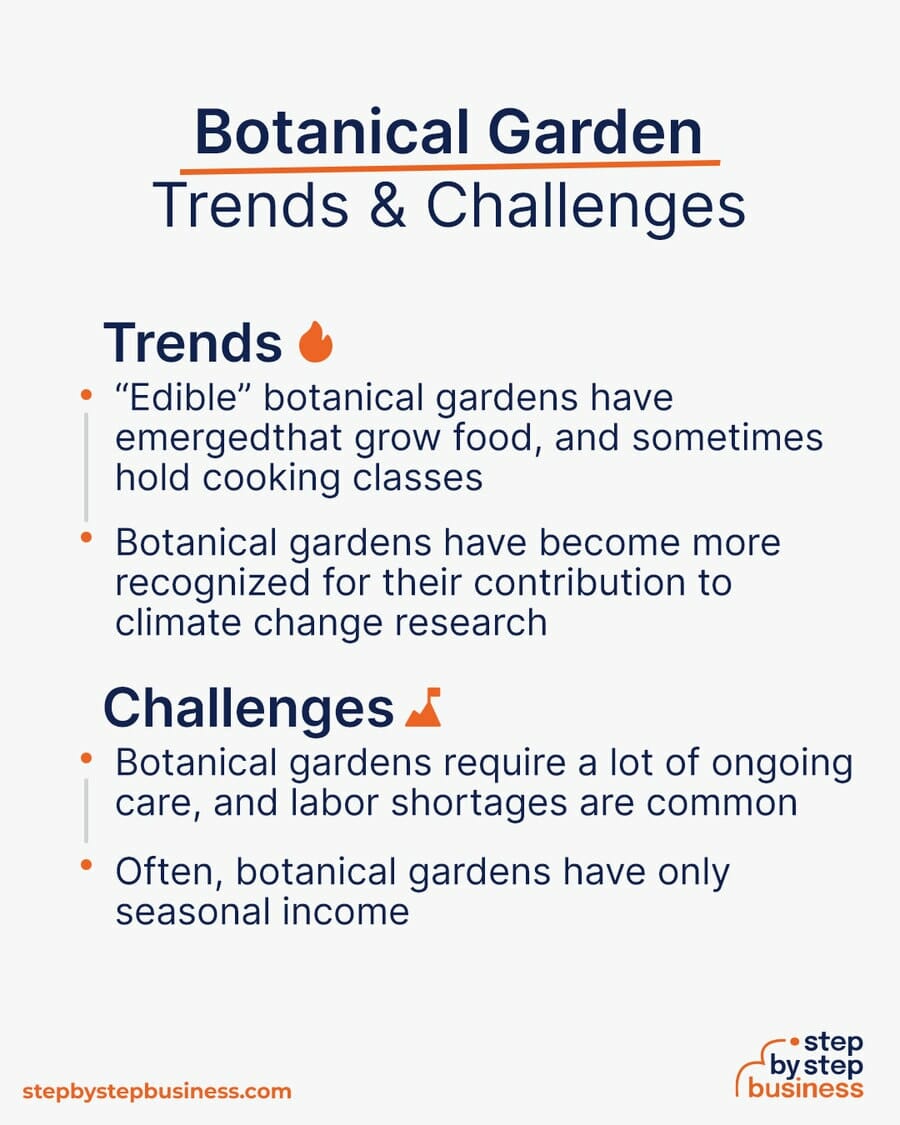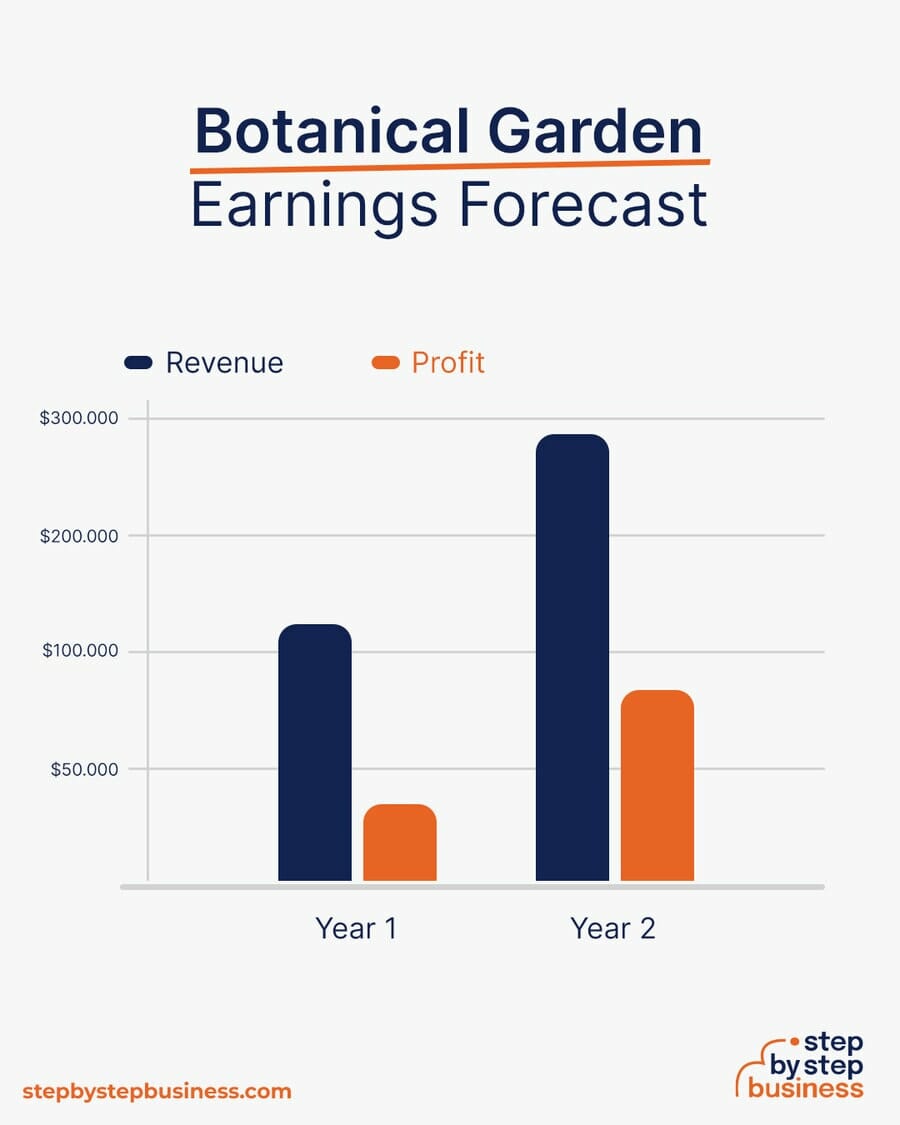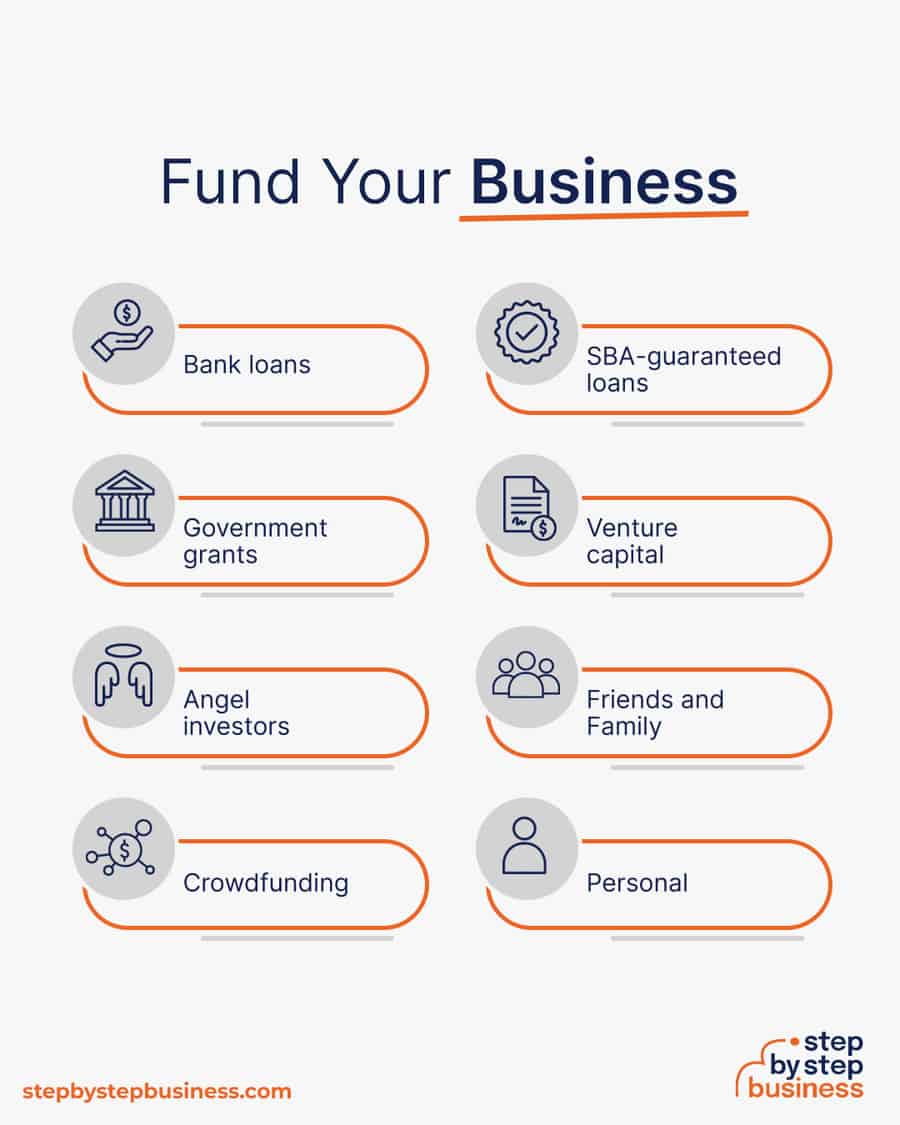Do you have a sizable backyard? You might be able to turn it into some serious cash flow, especially since starting a business at home reduces youro ...
You might consider targeting a niche, such as hosting educational programs.
We earn commissions if you shop through the links below. Read more
Written by: Carolyn Young
Carolyn Young is a business writer who focuses on entrepreneurial concepts and the business formation. She has over 25 years of experience in business roles, and has authored several entrepreneurship textbooks.
Edited by: David Lepeska
David has been writing and learning about business, finance and globalization for a quarter-century, starting with a small New York consulting firm in the 1990s.
Published on May 26, 2023

Investment range
$52,800 - $85,800
Revenue potential
$120,000 - $288,000 p.a.
Time to build
6 – 12 months
Profit potential
$36,000 - $86,400 p.a.
Industry trend
Stable
Commitment
Full-time
Here are the most important factors to consider when you want to start a botanical garden:

Little information is available about the botanical garden industry, but globally the aquariums, zoos, and botanical gardens industry is worth $16.7 billion.

Trends
Challenges
Startup costs for a botanical garden range from $50,000 to $85,000. Costs include the land, plants and tools, and a labor budget to prep the land and plant.
You’ll need a handful of items to successfully launch your botanical garden business, including:
| Start-up Costs | Ballpark Range | Average |
|---|---|---|
| Setting up a business name and corporation | $100 - $500 | $300 |
| Business licenses and permits | $100 - $300 | $200 |
| Insurance | $100-$500 | $300 |
| Website | $500 - $1,000 | $750 |
| Land | $30,000 - $50,000 | $40,000 |
| Plants | $1,500 - $2,500 | $2,000 |
| Labor budget | $20,000 - $30,000 | $25,000 |
| Sales and marketing budget | $500 - $1,000 | $750 |
| Total | $52,800 - $85,800 | $69,300 |

You should be able to charge about $20 per person for public admission to your garden. If you host events and educational programs as well, prices will vary, but these calculations will assume an average price of $1,000 per event. Your profit margin after all labor costs should be about 30%.
In your first year or two, you might have 300 visitors and 4 events per month, bringing in $120,000 in revenue. This would mean $36,000 in profit, assuming that 30% margin.
As you gain traction, you might have 1000 visitors and 4 events per month. With annual revenue of $288,000, you’d make a tidy profit of $86,400.
There are a few barriers to entry for a botanical garden. Your biggest challenges will be:
Now that you know what’s involved in starting a botanical garden, it’s a good idea to hone your concept in preparation to enter a competitive market.
Market research could give you the upper hand even if you’ve got the perfect product. Conducting robust market research is crucial, as it will help you better understand your customers, your competitors, and the broader business landscape.
Research botanical gardens in your area to examine their services, price points, and customer reviews.
This should identify areas where you can strengthen your business and gain a competitive edge to make better business decisions.
You’re looking for a market gap to fill. For instance, maybe the local market is missing a Japanese garden, or public garden that provides guided tours for field trips.
You might consider targeting a niche, such as hosting educational programs.
First, you should decide what types of plants you want in your garden.
Selecting plants and herbs for a botanical garden requires careful consideration of the garden’s climate, soil quality, and sunlight availability. It’s crucial to choose species that are well-suited for the local environment to ensure their survival and growth.
While some botanical gardens focus on showcasing native plants, others might opt for exotic or rare species to provide educational opportunities for visitors. You could choose native plants or tropical plants in a greenhouse, or a vegetable garden and herb garden.
Additionally, considering the garden’s thematic focus, be it medicinal herbs, ornamental flowers, or edible plants, will drive selections.
Lastly, maintaining biodiversity is key; diverse plantings not only create a visually appealing space but also promote a healthier ecosystem by supporting various wildlife and enhancing resilience against pests and diseases.
Then you should offer a variety of services at your botanical garden including things like:
If you grow food, you could also sell the produce and/or host cooking classes.
Your prices should depend on market prices in your area, but also your costs of operation.
Once you know your costs, use this Step By Step profit margin calculator to determine your mark-up and final price points. Remember, the prices you use at launch should be subject to change if warranted by the market.
If you offer a variety of services, you’re going to attract a variety of people, so you should spread out your marketing to include Instagram, Facebook, and LinkedIn.
You’ll need to find a plot of suitable land for your garden. You should choose a space that’s centrally located in your area so that it’s accessible to people all over your area. You’ll also need to check zoning requirements for the land.
Here are some ideas for brainstorming your business name:
Once you’ve got a list of potential names, visit the website of the US Patent and Trademark Office to make sure they are available for registration and check the availability of related domain names using our Domain Name Search tool below. Using “.com” or “.org” sharply increases credibility, so it’s best to focus on these.
Finally, make your choice among the names that pass this screening and go ahead and reserve your business name with your state, start the trademark registration process, and complete your domain registration and social media account creation.
Your business name is one of the key differentiators that sets your business apart. Once you pick a name, reserve it and start with the branding, it’s hard to switch to a new name. So be sure to carefully consider your choice before moving forward.
Here are the key components of a business plan:

If you’ve never created a business plan, it can be an intimidating task. You might consider hiring a business plan specialist to create a top-notch business plan for you.
Registering your business is an absolutely crucial step — it’s the prerequisite to paying taxes, raising capital, opening a bank account, and other guideposts on the road to getting a business up and running.
Plus, registration is exciting because it makes the entire process official. Once it’s complete, you’ll have your own business!
Your business location is important because it can affect taxes, legal requirements, and revenue. Most people will register their business in the state where they live, but if you are planning to expand, you might consider looking elsewhere, as some states could offer real advantages when it comes to botanical gardens.
If you’re willing to move, you could really maximize your business! Keep in mind, it’s relatively easy to transfer your business to another state.
Business entities come in several varieties, each with its pros and cons. The legal structure you choose for your botanical garden will shape your taxes, personal liability, and business registration requirements, so choose wisely.
Here are the main options:

We recommend that new business owners choose LLC as it offers liability protection and pass-through taxation while being simpler to form than a corporation. You can form an LLC in as little as five minutes using an online LLC formation service. They will check that your business name is available before filing, submit your articles of organization, and answer any questions you might have.
Choose Your State
The final step before you’re able to pay taxes is getting an Employer Identification Number, or EIN. You can file for your EIN online or by mail or fax: visit the IRS website to learn more. Keep in mind, if you’ve chosen to be a sole proprietorship, you can simply use your social security number as your EIN.
Once you have your EIN, you’ll need to choose your tax year. Financially speaking, your business will operate in a calendar year (January–December) or a fiscal year, a 12-month period that can start in any month. This will determine your tax cycle, while your business structure will determine which taxes you’ll pay.
The IRS website also offers a tax-payers checklist, and taxes can be filed online.
It is important to consult an accountant or other professional to help you with your taxes to ensure you are completing them correctly.
Securing financing is your next step and there are plenty of ways to raise capital:

You may be able to find grants available to start your botanical garden. The American Public Gardens Association offers many resources. You might also try crowdfunding if you have an innovative concept.
Starting a botanical garden business requires obtaining a number of licenses and permits from local, state, and federal governments.
Federal regulations, licenses, and permits associated with starting your business include doing business as (DBA), health licenses and permits from the Occupational Safety and Health Administration (OSHA), trademarks, copyrights, patents, and other intellectual properties, as well as industry-specific licenses and permits.
You may also need state-level and local county or city-based licenses and permits. The license requirements and how to obtain them vary, so check the websites of your state, city, and county governments or contact the appropriate person to learn more.
You could also check this SBA guide for your state’s requirements, but we recommend using MyCorporation’s Business License Compliance Package. They will research the exact forms you need for your business and state and provide them to ensure you’re fully compliant.
This is not a step to be taken lightly, as failing to comply with legal requirements can result in hefty penalties.
If you feel overwhelmed by this step or don’t know how to begin, it might be a good idea to hire a professional to help you check all the legal boxes.
Before you start making money, you’ll need a place to keep it, and that requires opening a bank account.
Keeping your business finances separate from your personal account makes it easy to file taxes and track your company’s income, so it’s worth doing even if you’re running your botanical garden business as a sole proprietorship. Opening a business bank account is quite simple, and similar to opening a personal one. Most major banks offer accounts tailored for businesses — just inquire at your preferred bank to learn about their rates and features.
Banks vary in terms of offerings, so it’s a good idea to examine your options and select the best plan for you. Once you choose your bank, bring in your EIN (or Social Security Number if you decide on a sole proprietorship), articles of incorporation, and other legal documents and open your new account.
Business insurance is an area that often gets overlooked yet it can be vital to your success as an entrepreneur. Insurance protects you from unexpected events that can have a devastating impact on your business.
Here are some types of insurance to consider:

As opening day nears, prepare for launch by reviewing and improving some key elements of your business.
Being an entrepreneur often means wearing many hats, from marketing to sales to accounting, which can be overwhelming. Fortunately, many websites and digital tools are available to help simplify many business tasks.
You may want to use industry-specific software, such as ACME, or doubleknot, to manage your tickets, client database, memberships, and event registrations.
Website development is crucial because your site is your online presence and needs to convince prospective clients of your expertise and professionalism. You can create your own website using services like WordPress, Wix, or Squarespace. This route is very affordable, but figuring out how to build a website can be time-consuming. If you lack tech-savvy, you can hire a web designer or developer to create a custom website for your business.
Your customers are unlikely to find your website, however, unless you follow Search Engine Optimization (SEO) practices. SEO will help your website appear closer to the top in relevant search results, a crucial element for increasing sales.
Make sure that you optimize calls to action on your website. Experiment with text, color, size, and position of calls to action such as “Order Tickets Now”. This can sharply increase purchases.
Here are some powerful marketing strategies for your future business:

Unique selling propositions, or USPs, are the characteristics of a product or service that sets it apart from the competition. Customers today are inundated with buying options, so you’ll have a real advantage if they are able to quickly grasp how your botanical garden meets their needs or wishes. It’s wise to do all you can to ensure your USPs stand out on your website and in your marketing and promotional materials, stimulating buyer desire.
Global pizza chain Domino’s is renowned for its USP: “Hot pizza in 30 minutes or less, guaranteed.” Signature USPs for your botanical garden business could be:
You may not like to network or use personal connections for business gain. But your personal and professional networks likely offer considerable untapped business potential. Maybe that Facebook friend you met in college is now running a botanical garden business, or a LinkedIn contact of yours is connected to dozens of potential clients. Maybe your cousin or neighbor has been working in botanical gardens for years and can offer invaluable insight and industry connections.
The possibilities are endless, so it’s a good idea to review your personal and professional networks and reach out to those with possible links to or interest in botanical gardens. You’ll probably generate new customers or find companies with which you could establish a partnership.
If you’re starting out small from a home office, you may not need any employees. But as your business grows, you will likely need workers to fill various roles. Potential positions for a botanical garden business include:
At some point, you may need to hire all of these positions or simply a few, depending on the size and needs of your business. You might also hire multiple workers for a single role or a single worker for multiple roles, again depending on need.
Free-of-charge methods to recruit employees include posting ads on popular platforms such as LinkedIn, Facebook, or Jobs.com. You might also consider a premium recruitment option, such as advertising on Indeed, Glassdoor, or ZipRecruiter. Further, if you have the resources, you could consider hiring a recruitment agency to help you find talent.
Botanical gardens serve an important purpose, promoting conservation efforts, helping with research, and educating the community. By starting your own botanical garden, you’ll be doing something of value, and with the proper management, making a nice living.
Now that you understand the business side of things, you’re ready to start digging up your successful botanical garden!
The profitability of a botanical garden can vary depending on factors such as the size of the garden, the number of visitors, admission fees, revenue from events and programs, and any additional sources of funding or donations. Some botanical gardens may generate profits, while others operate as non-profit organizations relying on grants and public support.
During a typical day at a botanical garden, various activities occur to maintain and enhance the garden’s beauty and functionality. These may include horticultural tasks like planting, watering, pruning, and maintaining the plants and gardens. Visitor services staff provide information and assistance to visitors, while education and outreach programs may be offered to engage and educate the public.
The growth potential of a botanical garden depends on several factors, including its location, the size and diversity of its collections, the quality of visitor experiences, and its ability to adapt and innovate. Botanical gardens can experience growth by expanding their collections, attracting a larger number of visitors through marketing efforts, offering new programs and events, and collaborating with other organizations.
A botanical garden is typically classified as a non-profit organization or a public institution dedicated to the study, cultivation, and preservation of plants for educational, research, and recreational purposes. While botanical gardens often generate revenue through admission fees, memberships, gift shops, and venue rentals, their primary focus is on promoting botanical knowledge, conservation, and public enjoyment rather than generating profit.

Published on December 1, 2022
Do you have a sizable backyard? You might be able to turn it into some serious cash flow, especially since starting a business at home reduces youro ...
Read Now

Published on July 13, 2022
Many major American businesses depend on outdoor activities, such as The North Face or Columbia. But there are also countless smaller businessesthat ...
Read Now

Published on July 12, 2022
Looking to help save the world? There are countless eco-friendly business ideas to help you create a greener earth while also making a good living.B ...
Read Now
No thanks, I don't want to stay up to date on industry trends and news.
Comments